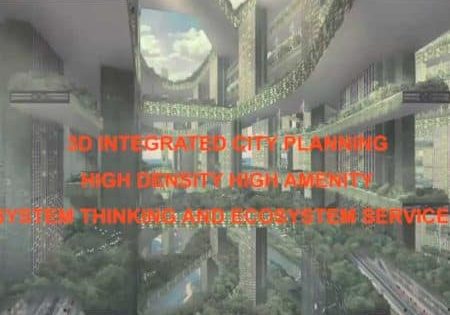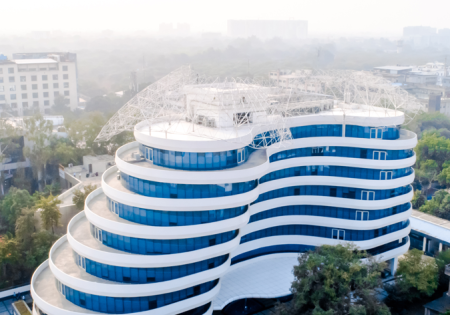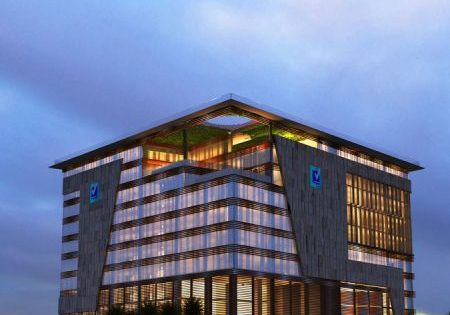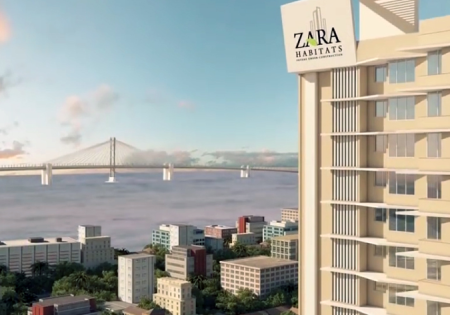“COVID-19 Impact — Real Estate Developers’ Perspective: Future of VT Systems”
Sep 1, 2020
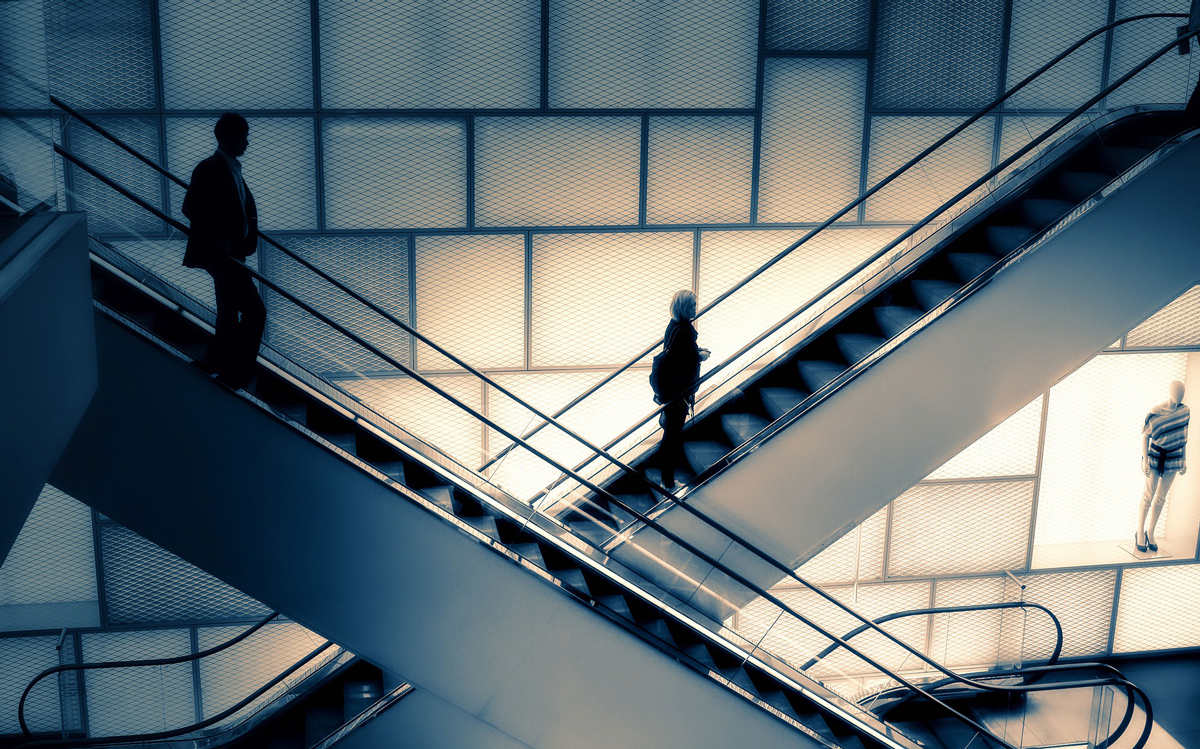
Second webinar in series yields lively exchange of ideas.
While the COVID-19 crisis continues to impact people’s lives and livelihoods in different ways across the globe, India is undergoing yet another extension of a nationwide lockdown. Rising cases, districts segregated into color-coded zones with containment areas and the gradual realization that this is not a short-term battle made it imperative to initiate discussion on how to deal with the new normal and formulate a blueprint for managing business going forward. . . . Editor
Organized by ELEVATOR WORLD India and Virgo Communications, the second edition of a webinar series on how the coronavirus pandemic is impacting the vertical-transportation (VT) industry had the theme “COVID-19 Impact — Real Estate Developers’ Perspective: Future of VT Systems.” A panel comprising developers, property consultants and architects provided perspectives on the way forward and implications for both real estate and VT during the crisis and over the long term. Following the successful first webinar, “COVID-19 Impact — Challenges Faced by the Elevator Industry and the Way Forward,” on April 28 (ELEVATOR WORLD India, 2nd Quarter 2020), the most recent event was held on May 9 and drew 599 registrations and 278 attendees from 46 cities.
A solution could be to have a greater number of smaller elevators with fewer destinations.
— Nilesh Dongre, architect, head developer/spaces, Edifice Consultants
The panel consisted of K. Mukund Raj, president and CEO, real estate business, Raymond Group; Mohan Abichandani, director — projects, K. Raheja Corp.; K. Jayakumar, managing director, RMZ Corp.; Kumaran W.R., senior vice president, development, Virtuous Retail; Nilesh Dongre, architect/head developer, Edifice Consultants; Jatin Shah, national director, Colliers International; and Rana Ram, architect, RSP Design Consultants. Panelists discussed the ramifications of the pandemic over the short to long term and shared their expectations for the VT industry.
Anitha Raghunath, publisher of EW India and director of Virgo Communications and Exhibitions Pvt. Ltd., hosted and co-moderated the webinar with Krishna Kumar Ravi, president and CEO, PVN Associates Pvt. Ltd., a leading elevator consultant in India.
Raghunath introduced panelists and described the webinar series as an endeavor to create opportunities for the elevator industry to connect and coordinate with colleagues around the world. “The COVID-19 pandemic has created an unprecedented crisis,” she said. “We need to find ways to adapt to the new situation. The objective of these webinars is to contemplate anticipated changes in terms of real estate design, customer demand, etc.”
The session got underway with Ravi seeking panelists’ opinions on how the VT sector will operate during and after the crisis. For residential buildings, Raj said the key issue is social distancing in elevators and elevator lobbies. Other than at peak times, such as in the mornings and evenings, he doesn’t anticipate much impact. “People will make adjustments as required,” he stated. “There is not much need to alter the design of residential buildings.”
Already, demand for lobby size has gone up in most projects. In the near future, it may increase further.
— Mohan Abichandani, director, projects, K. Raheja Corp.
Abichandani observed that VT systems are used to operating in a certain manner. He said:
“Traditionally, we wanted more and more people in the lift. We wanted more speed and more density per square foot. Now, that has reversed. The whole thing has to be changed. We need to have a plan for the next two years and hope we will return to the previous arrangements. In the meantime, the challenge faced by us is, how we can reduce density.”
Jayakumar agreed and said all involved must prepare themselves for short- and long-term COVID-19 impacts related to elevator capacity. He said real estate developers view elevators as a “very important factor in buildings”: more than merely a means of transportation, a way for end users to interact with a property.
Jayakumar said that, for up to eight months, density will come down. Long term, he said, he expects the situation to return to normal. Companies opting for employees to work from home will also bring down passenger density and relieve pressure on elevator operations. “So, we don’t see much of a problem, other than social distancing will need to be enforced in the short term, and that will cause some inconvenience,” he said.
Unfortunately, we don’t have domestic manufacturers that have destination control systems. We are relying on other countries like China and Switzerland.
— Jatin Shah, national director, Colliers International
Changes in Behavior, Design
The same will be true for retail, Kumaran W.R. said. While he projects the number of escalators and elevators to remain the same over the short term in large, organized retail properties, he added:
“Shopping centers may have to re-strategize in terms of looking at usage of elevators, as these are interactive pieces of equipment and not like chillers placed in a corner. We will be restricting the number of people, but that will be in the short term. We also need to follow social-distancing guidelines and enforce enhanced sanitization of elevators and escalators. I don’t see any change in retail design in the near future.”
Already, demand for lobby size has gone up in most projects. In the near future, it may increase further.
— Shah
Dongre said architects primarily look at handling capacities and wait intervals when incorporating elevators. He observed:
“How we design buildings to manage densities is going to be important. Going forward, I see wait intervals having additional emphasis. Rather than looking at larger elevators, we can look at smaller elevators, because we don’t want to crowd them. Analysis runs on the fact that elevator cars are 80% loaded to capacity. A solution could be to have a greater number of smaller elevators with fewer destinations. This way, space between passengers will start increasing. In office buildings, staircases are typically used as fire escapes. This can be expanded to non-emergency use. If you use alternate floors, people can walk down. These are some of the ways we are going to be using these spaces in the future.”
Ram underlined that social distancing must be managed. In Chandigarh, capital of the northern states of Punjab and Haryana with a population of just over 1 million,[1] many projects range from 15-17 m in height, making social distancing manageable. This isn’t the case in places like Bengaluru, with a population well over 8 million.[2]
Ram observed that many people prefer escalators internally between floors, typically at every other floor. Ram said clients including Infosys and K. Raheja Corp. have opted to connect floors with escalators.
Returning to Normal: Timelines
Posed by Ravi, the next question was whether panelists see reduced density due to COVID-19 resulting in a greater demand for space. The overall response was that the changes we are witnessing now are temporary, and the situation should revert to normal soon.
Raj shared that during the COVID-19 transition in China, he saw no property owners investing in recasting existing buildings. “They followed a rotation system that enabled them to use the same office to continue the same business, staggering comings and goings of workers on individual floors,” he said. “This allowed them to maintain social distancing without additional expenditure.” He predicts a return to normalcy after six to nine months.
Abichandani concurred. He said:
“I don’t think it would be beneficial to take on more space. Productive people can work from home. I don’t think anybody will be ready to pay more for more space, since everyone wants to reduce expenditures. How we improve existing buildings is going to be the greatest challenge. Touchless entry and touchless elevators are the solution. In India, we have this concept called ‘Jugaad,’ [a nonconventional, frugal innovation often termed a ‘hack’].[3] This is happening in buildings today. People have used toothpicks to push elevator buttons, thereby making them touchless.”
Jayakumar opined that companies from all sectors, particularly those in information technology (IT), are looking to cut costs. The focus, he said, will be on how to improve elevator car cleanliness, rather than adding office space.
When Ravi asked whether COVID-19 would lead to larger-capacity elevators, Raj explained that, in the residential sector, he does not expect a change. Precautionary measures will persist for the next six to nine months. Developers already build a certain amount of redundancy into VT systems. To incorporate larger elevators would mean a capital expenditure for the developer and greater maintenance costs for residents. There may, however, be increased floor space indexes for main lobby areas, he observed.
Shah agreed, stating that after approximately six to eight months, elevators will return to previous densities of up to 24 passengers. “In the long run, larger elevators won’t be practical,” Shah said. “Precautions will be in place until a vaccine for COVID-19 is found.” Right now, he said, these precautions include ensuring good airflow in VT systems, properly screening building occupants and — where possible — integrating touchless solutions.
Residential and Commercial Outlook
Quizzed by Ravi on the possibility of companies developing more commercial projects than residential ones, Dongre said he foresees residential development taking a pause and gaining momentum after some time. “The residential segment’s demand is related to people’s jobs and livelihoods,” he said. “Commercial demand will remain; it may dip a bit but will soon revive.”
Responding to the possibility of buildings going horizontal, Ram said he feels this could happen only in B- and C-grade cities if more viruses happen. When Ravi brought up increased demand for escalators in these cities, Kumaran W.R. pointed out that information-technology companies have set up campuses served by escalators in many tier-2 and -3 cities. “It depends on demand,” he said. “Residential is not going to see any change. In a typical retail floorplate, the zone close to the shopping outlets is where maximum demand happens, so we may need to reposition those units. The level of sanitization will be important.”
Regarding Ravi’s query about possible stress on pricing and whether imports could be replaced by locally sourced equipment, Abichandani responded:
“I would definitely go for ‘Make in India,’ but that’s not 100% possible now. Fifty to sixty percent of our components come from China or other countries. After a few years, when we make more components locally, we can take another look. Once the lockdown is over, this can be given impetus.”
In a similar vein, Jayakumar underlined that India is transitioning from a developing to developed economy. The “Make in India” initiative will find takers if there are quality products, he pointed out.
On the possibility of malls changing post COVID-19, Kumaran W.R. opined that organized retail is at a very low percentage in India. “There is a lot of catching up to do for India,” he said. “The way it is going to change is that we must look at it as an opportunity. People have already started discussing strategies.” The “new normal” will involve social distancing, touchless solutions and increased cleanliness.
Cutting Back on Frills?
Ravi then posed the question of project specifications and cutting down on frills. Will elevators be one of the major amenities to go? Perhaps not, but Ram said common areas will see considerable impact. “Now, when I enter the lift, we make a queue,” Ram said. Allowing 40 people to stand in the lift lobby is not recommended with COVID-19, so the size of common areas may have to increase, he said. Dongre was of the same opinion. “The common areas, the way we group people together, will change,” he stated.
On the issue of floor space efficiency, Shah responded that the question of how spaces are utilized is always asked of architects. He observed:
“Already, demand for lobby size has gone up in most projects. In the near future, it may increase further. The sizing of elevator lobbies is done per usage. The COVID-19 crisis is not going to continue for eternity. There is a short-term gap, and, with reduced population entering, it is not much of a challenge. Any retrofit at a later date is not going to be possible. Tomorrow, a new tenant may arrive and require a larger density, so one has to plan accordingly.”
Raj said that in commercial spaces, the emphasis for the next several years will be on functionality and future readiness like automation, smart offices and smart building concepts.
Ravi then brought up questions on touchless elevator technology. According to Abichandani:
“The main question at the moment is managing buildings with existing systems without spending money, then migrating to touchless. Touchless will be the future for new buildings. For existing properties, any small change in control or electric panels to make the system touchless is going to incur a cost. We don’t know how the market is going to behave once the lockdown is over. If we have to go touchless, people have to come up with innovative ideas. Lift manufacturers have to introduce technology that is economical. Then, developers will definitely adopt it.”
Kumaran W.R. opined that touchless technology is wide-ranging. App-based systems, for example, have evolved and are necessity-based. He does not foresee touchless technology being used widely in retail.
On how affordable it would be to go touchless, Raj shared that, in existing buildings, lease terms of two to three years are fixed, and tenants may ask for a reduction with the COVID-19 crisis. So, there is not much impetus for incorporating touchless but new build-to-suit properties will likely incorporate touchless panels. In multi-tenanted spaces, it will take time for the technology to become viable in terms of both supply and servicing.
Regarding this technology, Shah said:
“If lift manufacturers embrace the innovation and navigate all the options, this technology is going to be in demand. Unfortunately, we don’t have domestic manufacturers that have destination control systems. We are relying on other countries like China and Switzerland. We need to consider cost and benefit. In overall construction cost, elevators account for just 2-3%. What impact is touchless or any other technology going to have on the total cost? Within the overall budget, it may be limited. We need to look forward to embracing this technology and be ready for it.”
Shah drew attention to upcoming challenges like demand and shortage of labor, the need for new technologies, indigenization and investing in multiple locations for elevator manufacturing. Apart from addressing innovations, the usage of elevators could be monitored by leveraging the Internet of Things to determine the impact on design, speed and number of elevators.
Finally, Raghunath posed the most critical question: “When do you think the industry will bounce back?” Raj responded that “the timeline is difficult to predict.” It will depend, he said, on the extent and duration of the pandemic. Since it is a discretionary expenditure, residential property will take a backseat to other priorities. Once the pandemic ebbs, the affordable segment will see a revival immediately, while the luxury segment will take time, he said. A gated, mixed-use development that has all one needs within a relatively small distance will be a big draw. In 2021-2022, Raj projects, the market should bounce back much stronger.
Referring to when the industry will bounce back as the “million-dollar question,” Abichandani agreed with Raj’s 2021-2022 projection. “It will happen when we have the vaccine and people have confidence in shaking hands and not getting coronavirus,” he said.
The session concluded with Raghunath thanking the panelists for sharing relevant insights that would enable better understanding and cooperation between the real estate and VT industries, thereby facilitating a speedier recovery post-COVID-19.
References
[1] en.wikipedia.org/wiki/Chandigarh [2] en.wikipedia.org/wiki/Bangalore [3] en.wikipedia.org/wiki/Jugaad
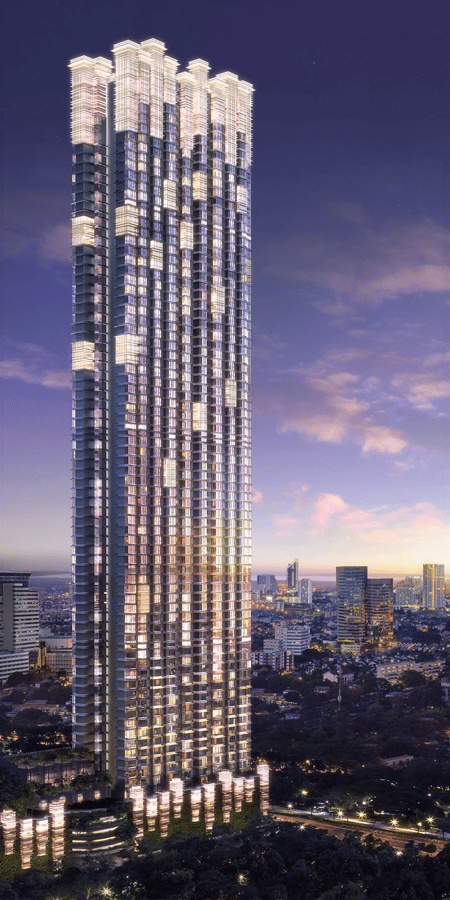

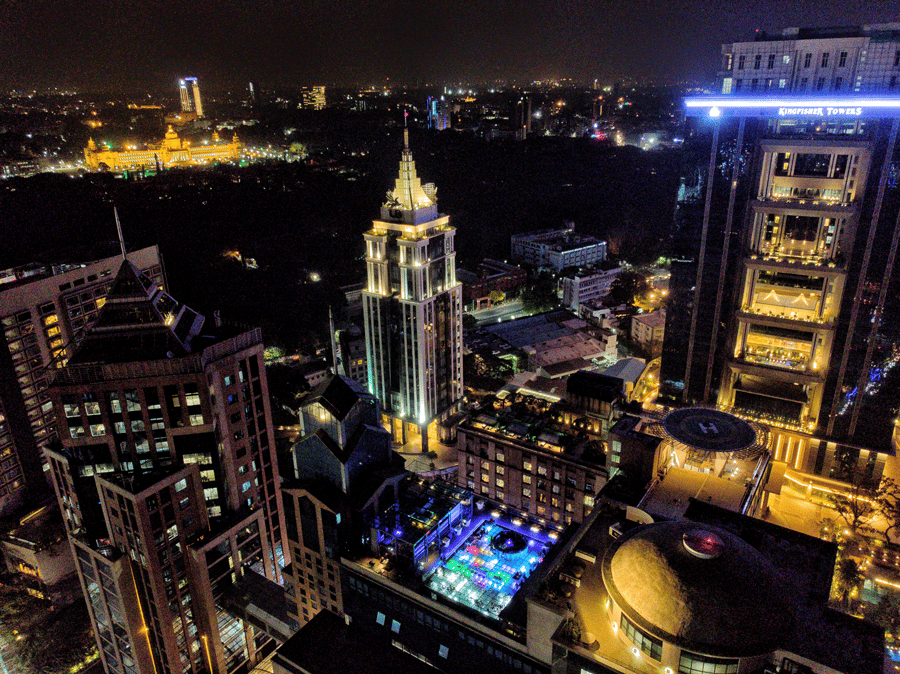
Get more of Elevator World. Sign up for our free e-newsletter.


